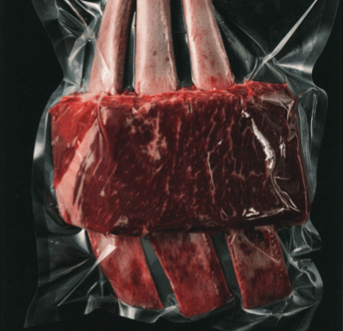Debunking Sous Vide Cooking Misconceptions
Discover the Truth About Sous Vide Cooking Myths – Debunked! Get the Facts on Safe, Flavorful, and Convenient Culinary Techniques
COOKING SOUS VIDE
Francesco Feston
10/12/20233 min read


Myth: Cooking food without exposure to air heightens the risk of foodborne illness.
Why is this belief prevalent?
Concerns arise from the potential development of the toxin responsible for botulism and other harmful microorganisms in vacuum-sealed food mishandled or cooked at inadequate temperatures.
Fact:
Contrary to these fears, extensive evidence supports that food is actually safer when cooked using the sous vide method. The sealed environment minimizes the risk of accidental contamination during handling, a common cause of foodborne illnesses. Sous vide enables precise temperature control, eliminating the guesswork in traditional cooking. Adherence to proper guidelines for chilled storage and appropriate cooking time and temperature combinations renders sous vide a minimal risk for botulism or other severe foodborne diseases.
Myth: Safely cooking vacuum-sealed food necessitates pre-blanched packages in water baths exceeding 80°C (176°F) before cooking at lower temperatures.
Why do people think this?
Certain thermophilic pathogens can survive at temperatures that are almost high enough to blanch food .
Fact:
Brief blanching does provide an extra layer of food safety by pasteurizing the food's surface. In certain scenarios, blanching is beneficial, but it's not a requirement for ensuring food safety. Restaurants employing sous vide methods often swiftly cook food to its desired final temperature and serve it immediately, which is safe and permissible for short cooking times.
For food that may have surface contamination, cooks often opt for an alternative approach to eliminate pathogens: searing the food. Whether searing occurs before or after sous vide cooking is inconsequential; both methods enhance food safety and often elevate its taste.
Myth: Seafood isn't safe to cook using sous vide.
Why is this belief widespread?
Most people prefer lightly cooked fish, which typically doesn't pasteurize the food.
Fact:
Consuming raw or unpasteurized foods entails some risk, regardless of the cooking method. Sous vide neither increases nor decreases this risk. Fish, in particular, is commonly served raw or lightly cooked. It's worth noting that even the U.S. Food and Drug Administration's recommended times and temperatures for cooking fish may not guarantee pasteurization.
Myth: The cooking temperature in sous vide affects the safe storage time in the refrigerator.
Why is this a concern? Confusion arises due to the interplay between pasteurization standards and concerns about anaerobic pathogen growth.
Fact:
Proper pasteurization is crucial before refrigerating many foods, regardless of the cooking method used. Once pasteurized, foods cooked sous vide may be safely stored up to three days below 5°C (41°F), up to 30 days below 10°C (34°F), and indefinitely below -20°C (-4°F).
Myth: Meat must be cooked sous vide to higher temperatures when on the bone than when fileted.
Why is this a common misunderstanding?
The reasons behind this myth are unclear, but misconceptions persist about how bones affect heat distribution in food.
Fact:
Meat with bones can safely be cooked sous vide. While some bones conduct heat differently than meat, the right time and temperature allow you to cook bone-in meat sous vide.
Myth: Plastics used in sous vide packaging release harmful chemicals into food.
Why do people worry about this?
Media reports have raised concerns about chemicals leaching from plastic containers.
Fact:
The safest plastics for food use are high-density polyethylene, low-density polyethylene, and polypropylene, which are the materials in most sous vide bags and reputable food storage bags. Concerns about sous vide bags are misplaced. However, bulk plastic wraps sold to the catering industry, made from polyvinyl chloride or polyvinylidene chloride, may contain harmful plasticizers that can leach into fatty foods at higher temperatures. Polyethylene-based plastic wraps, only slightly more expensive, do not pose the same concerns.
Some professional kitchens use clear, rigid, polycarbonate plastic storage containers, which may contain BPA, a chemical that can disrupt hormones and leach into food or beverages through cracks and crazing due to wear and tear. While these containers are approved for food use, those concerned about BPA contamination should replace any containers exhibiting cracks or crazing.
